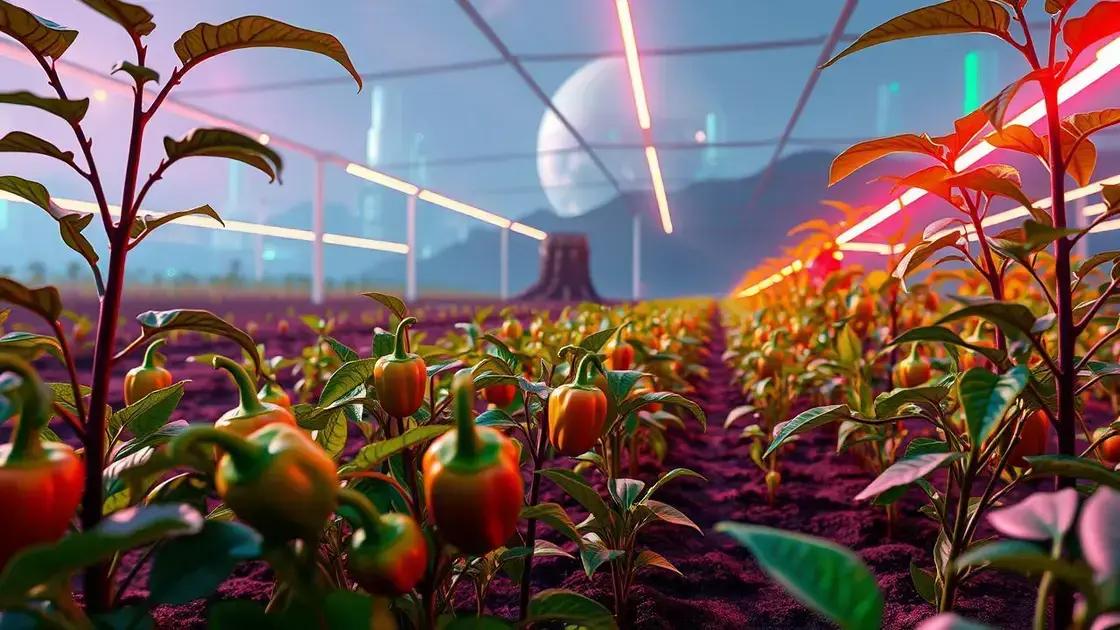How to Take Care of Jalapeno Plants: 5 Essential Tips for Success
How to take care of jalapeno plants is a question often asked by gardening enthusiasts eager to cultivate vibrant vegetables. Whether you’re a seasoned gardener or just starting, the satisfaction of growing your own jalapenos is rewarding. In this article, you’ll find practical tips to nurture your jalapeno plants, focusing on watering, fertilizing, and pest management strategies.
Table of Contents
ToggleEssential tips for watering your jalapeno plants
How to take care of jalapeno plants includes understanding the vital role of proper watering. Ensuring your jalapeno plants receive adequate hydration is crucial for their growth and productivity. These hardy plants thrive in warm, sunny environments but still require consistent moisture to flourish. Here are some essential tips for watering your jalapeno plants effectively.
Understanding water needs
Jalapeno plants prefer well-draining soil, which allows moisture to reach their roots without waterlogging. It’s important to consider the following factors when determining your watering schedule:
- Soil type: Sandy soils drain quickly, while clay retains water longer.
- Climate: Hotter, drier conditions necessitate more frequent watering.
- Plant maturity: Younger plants require more frequent watering than established ones.
Watering schedule
To keep your jalapeno plants healthy, establish a consistent watering routine. Follow these guidelines:
- Water deeply and infrequently to encourage strong root growth.
- During hot weather, aim to water every 2-3 days.
- In cooler months, reduce the frequency to once a week.
Signs of overwatering and underwatering
It’s essential to monitor your plants for signs of stress due to improper watering. Look for these symptoms:
| Condition | Signs |
|---|---|
| Overwatering | Yellowing leaves, wilting, and root rot. |
| Underwatering | Crispy leaves, wilting, and stunted growth. |
Best practices for watering
To ensure your jalapeno plants thrive, use these practical watering techniques:
- Water in the early morning to minimize evaporation.
- Use a soaker hose or drip irrigation to deliver water directly to the roots.
- Avoid getting water on the leaves to prevent fungal diseases.
By following these tips, you’ll be well-equipped to provide the right amount of hydration for your jalapeno plants. For further insights on plant care, consider exploring indoor gardening techniques that can enhance your gardening skills.
Best practices for fertilizing jalapeno peppers

Best practices for fertilizing jalapeno peppers are essential for promoting healthy growth and maximizing yield. Fertilization is crucial, as it provides the necessary nutrients that these plants need to thrive. Proper fertilization techniques can lead to robust jalapeno plants and bountiful harvests.
Understanding jalapeno nutrient needs
Jalapeno peppers benefit from a balanced supply of nutrients throughout their growth stages. Key nutrients include:
- Nitrogen (N): Vital for vegetative growth and leaf development.
- Phosphorus (P): Supports root development and flower formation.
- Potassium (K): Enhances fruit quality and overall plant health.
Choosing the right fertilizer
When fertilizing your jalapeno plants, selecting the appropriate type of fertilizer is key. Consider the following:
- Organic fertilizers: Options like compost, well-rotted manure, and fish emulsion provide slow-release nutrients.
- Chemical fertilizers: A balanced N-P-K (Nitrogen-Phosphorus-Potassium) fertilizer works well for quick nutrient availability.
Fertilization schedule
Establishing a fertilization schedule is important for optimal growth. Follow these best practices:
- Apply fertilizer before planting to enrich the soil.
- Fertilize every 4-6 weeks during the growing season.
- Use a liquid fertilizer for quick absorption and visible results.
Signs of nutrient deficiencies
Monitor your jalapeno plants for signs of nutrient deficiencies, which can affect growth and yield:
| Nutrient | Symptoms |
|---|---|
| Nitrogen | Yellowing leaves and stunted growth. |
| Phosphorus | Purple tinges on older leaves. |
| Potassium | Brown leaf edges and poor fruit development. |
By following these best practices for fertilizing jalapeno peppers, you can ensure your plants receive the right nutrients for robust growth. For further techniques in plant care, consider exploring indoor gardening techniques that can enhance your gardening skills.
Identifying and managing jalapeno plant pests
Identifying and managing jalapeno plant pests is crucial for maintaining the health of your plants. Pest infestations can severely impact jalapeno growth and yield, making it essential to spot them early and manage them effectively. Here’s how you can protect your plants from common pests.
Common jalapeno plant pests
Several pests may target your jalapeno plants. Here are some of the most common:
- aphids: Small, green insects that suck sap from leaves, causing yellowing.
- Spider mites: Tiny pests that create webbing and cause stippling on leaves.
- Whiteflies: Small white insects that fly when plants are disturbed, leading to leaf damage.
Signs of pest infestations
Understanding the signs of pest infestations helps in early detection. Look for:
- Discolored or wilting leaves.
- Visible insects on leaves and stems.
- Sticky residue on plants, known as honeydew, from aphids and whiteflies.
Effective pest management strategies
Implementing effective strategies is key to managing pests:
- Regular inspection: Check your plants weekly for any signs of pests.
- Natural predators: Introduce beneficial insects, like ladybugs, to control aphids.
- Insecticidal soap: Use this eco-friendly option to tackle small infestations.
Pest prevention techniques
Preventing pests before they become a problem is the best strategy. Consider these techniques:
- Proper spacing between plants to ensure good air circulation.
- Maintaining healthy soil through regular fertilization.
- Removing debris and weeds around plants to eliminate pest habitats.
By identifying and managing jalapeno plant pests effectively, you can ensure your plants remain healthy and productive. For additional plant care insights, consider exploring indoor gardening techniques to further enhance your gardening skills.
In conclusion
Caring for jalapeno plants requires attention to several key factors, including proper watering, effective fertilization, and diligent pest management. By understanding the needs of your plants and implementing the best practices outlined in this guide, you can cultivate healthy jalapenos that yield abundant fruit. Don’t forget to stay informed and adapt your techniques to meet the specific requirements of your growing conditions. For additional resources and tips on enhancing your indoor garden, continue exploring reliable gardening sites. Happy gardening!

